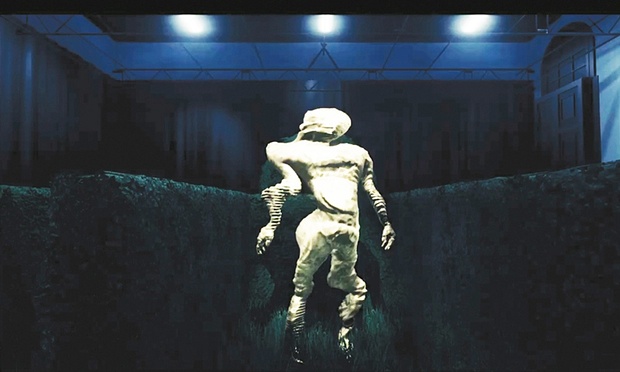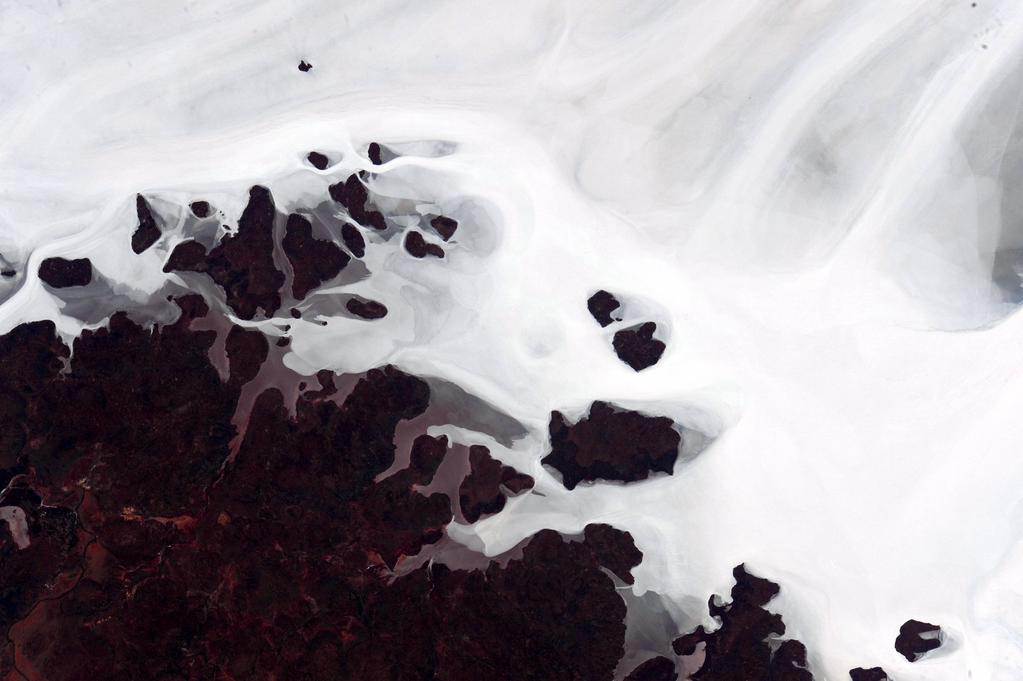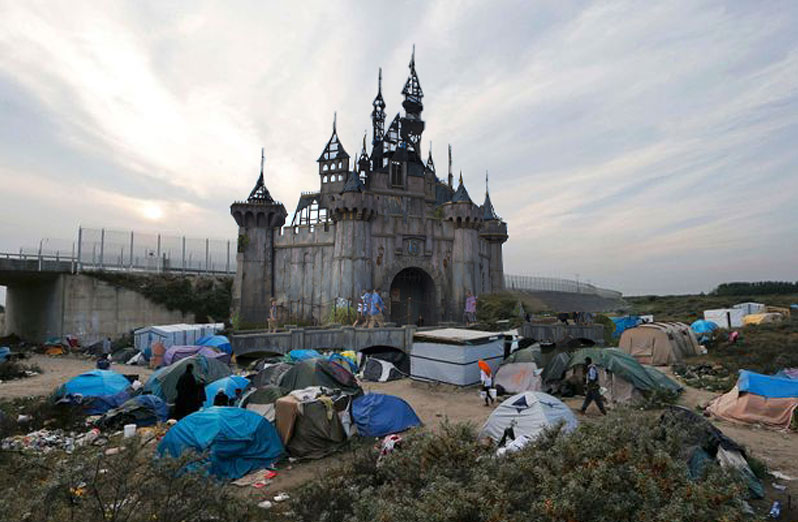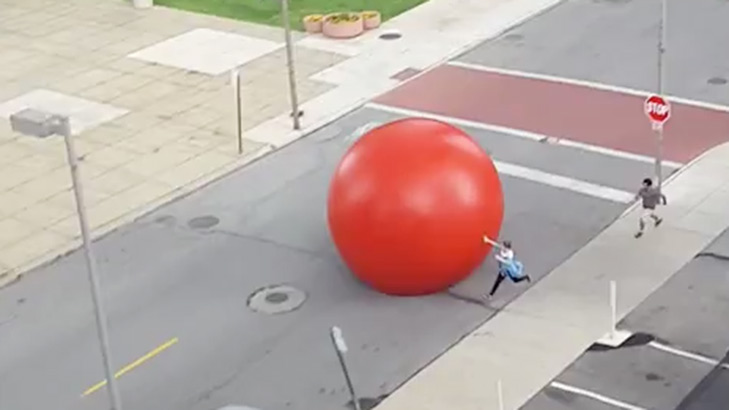Art News and Updates from Gallereo
All the latest news from the art world, as well as what's happening here at Gallereo. If you've built a gallery at Gallereo, let us know about your experience and you and your site could feature in our blog in the coming weeks.
Friday 16th October 2015Instagram as Art
Perhaps the most popular image sharing application on the planet, Instagram has taken the world by storm. With over 400 million users around the world, and over 30 billion photos shared as of September 2015 (yes, that's billion with a b), it's impossible to deny the popularity of the app. Most serious photographers have scoffed at the usage of Instagram, probably driven by the nauseating filters that were the hallmark of the app at the beginning of its tenure as an internet fixture. Since those vintage days, Instagram has matured incredibly and has even been at the center of a massive copyright scandal involving artist Richard Prince.
Many people don't regard the photos posted to Instagram as art, but yet when Prince took a series of images from random Instagram feeds, enlarged them, and published them as his own work, all of them sold for an estimate $100,000 apiece. Due to some complex legal trickery, this procedure apparently constitutes a derivative work, and therefore is protected speech in the United States and thus no legal challenges can be successfully made to stop him.
If people are willing to treat Prince's "derivative versions" of Instagram photos as art, does it not then logically follow that the originals themselves have artistic merit as well? Or is the controversy surrounding his work what gives it artistic value to the collector? The provenance of a work often increases its value to collectors, but it doesn't usually create it from the start.
One of the strangest elements about Instagram is its role as a social media magnet. Not just about photographs exactly, there is an entire community built up which has the power to make and break careers. Instagram celebrities hardly seem like a real thing, but some people - typically women, and typically attractive women at that - have built up such loyal followings that they actually get paid for photographs showcasing certain products despite having no traditional modeling experience. Do their photographs count as art? What if they haven't been paid?
The traditionally defined lines between the art world and popular photography are becoming more and more blurred, but it's hard to form an opinion about whether or not this is a bad thing. Instead of a closed world, perhaps it's about time that the art world developed its own meritocracy, instead of having gallery and collector kingmakers decide who succeeds and who doesn't.
Posted on October 16th 2015 on 11:29pm
0 Comments
Wednesday 14th October 2015Fighting Forgery with DNA
Forgery is one of the most prominent and destructive problems affecting the art world today. When it's impossible to go a single week without a new headline about record breaking auction sales that are then trumped the next month or even the next week, there is a huge amount of incentive for forgers to practice their illicit craft. Conversely, of course, there is also a huge incentive for artists, auctioneers, and insurance companies responsible for proving provenance of various works to combat the forgeries using every possible means at their disposal. Sometimes, that means inventing brand new technologies that outside the capabilities of most forgers.
The newest of these technologies? Using synthetic DNA as a uniquely trackable chemical signature.
It sounds like a story out of science fiction, but we're now living in a time when technology is starting to push the very bounds of credulity. Synthetic DNA is not particularly a new idea in academic circles, but the prospect of using it in practical applications is on the very cutting edge of science at the moment. The idea of using it to prevent forgery is the brainchild of the Global Center for Innovation, a part of the State University of New York at Albany. After two years and $2 million USD of investment funds from ARIS Title Insurance Company, an insurance firm that specializes in art authentication, they finally have a procedure that may soon begin to be used in commercial applications.
“We wanted a marker that was very hard to locate and not prone to environmental issues or tampering,” said Robert J. Jones, president of SUNY Albany, speaking to the New York Times. Due to the rapidly increasing technical capabilities of forgers, many companies who used to regularly perform authentications have stopped providing that particular service, as the legal consequences of making a mistake can be staggeringly expensive. With this new technology, the synthetic DNA will permeate the work and can then be read later by authenticators. The information encoded in the DNA will create an encrypted link to a database that contains all the relevant information about the piece in question.
No matter how incredible it seems, it begs the question that as DNA sequencing technologies become more and more common, how long will this particular approach protect artists from fraud? Perhaps it's always been the case, but it seems like nothing more than the next step in the technological arms race between authenticators and forgers.
Posted on October 14th 2015 on 11:11pm
0 Comments
Friday 09th October 2015Even Venice is Not Immune
One of the more disturbing trends we've been seeing lately in the West is a surprising yet sinister one, a fairly rare type of thing to discover in the art world. As cities grow, develop and change with the changing tides of the global economy, many cities that were built around highly specific industries suddenly find themselves strapped for cash and scrambling to find ways to balance their books.
Most problematically, many of these cities were previously extremely well off due to the boom of their specific industry, no matter whether it was automobile manufacturing or tourism, and when cities are well off they tend to invest in great public cultural works, including their own municipal museums. When the bottom falls out of their industry, many myopic - and arguably spineless - politicians look around desperately for any chance they have to offset even the most temporary of budget deficits, all as a way of propping up their own flagging efforts at financial management and appearing to be strong and decisive.
For some reason, these politicians often look towards the art collections their cities built up during the boom years as a resource to be spent rather than a treasure to be protected. We saw it during the bankruptcy of the city of Detroit, as the American automotive manufacturing sector collapsed, and the emergency relief managers seriously considered selling off some of the works from the Detroit Institute of Art collection to fill up their budget issues. Probably the last place we would ever expect it to happen is in one of those gems of artistic and cultural history - Venice, Italy.
The floating city (or the sinking city, depending on who you ask) has always been a tourist haven, and perhaps overdependence on this primary industry is part of the reason that they are now in such dire financial circumstances. However it came about, the new mayor of Venice, Luigi Brugnaro, seems to feel it is acceptable to auction off the artistic works accumulated by the city's civic museums. The works in question are by Gustav Klimt and Marc Chagall, and could raise up to 400 million euros at auction. The reason he attempts to give to justify the sale of these works? The artists have nothing to do with Venice, and therefore don't need to be house by the city's museums but should belong in private hands.
It may start there, but what happens the year after when there has been no improvement in the city's financial situation? How many more works will be "justified" as saleable?
Posted on October 09th 2015 on 08:15pm
0 Comments
Wednesday 07th October 2015Virtual Reality Art

Ever since the early 1980s when virtual reality technology was initially developed, people have been waiting for it to revolutionize the world, whether it's in the world of computers, art installations, films, or more esoteric applications like data visualizations. Time and again, users have been generally disappointed by the various virtual reality offerings, however, as the technology itself has been unable to keep up with the demands of the users. This may be all about to change with the upcoming commercial release of the Oculus Rift virtual reality headset.
The Oculus Rift headset is actually one of the most successful results of the recent crowdfunding phenomenon that has completely shaken up the world of product startups, originally being put forward as a project on the website Kickstarter. It's not quite ready for consumer purchase yet, but the manufacturers are hoping for a release in the first quarter of 2016, with preorders beginning towards the end of this year. Luckily for all of us consumers, developer versions of the headset have been available for quite some time now, which means that interested parties have been able to get a hold of a prerelease version of the equipment in order to begin creating content for all the rest of us, and this includes an impressive number of artists who have been salivating at the chance to start exploring what the technology can do.
We have already discussed the relative merits of the idea of video games as art, but the Oculus Rift completely changes this entire dialog and dumps it on its head. Suddenly the idea of just what a video game really is begins to change, as the (virtual) realities of interactive films force us to re-evaluate our preconceptions.
One artist who is exploring these exciting new virtual realities is Canadian artist Jon Rafman, who has had a recent exhibit at the Zabludowicz Collection in London. The overall exhibit hasn't met with resounding success, but by far the most popular element of the show is his exploration of the Oculus VR headset. The piece is entitled Sculpture Garden (Hedge Maze), and takes the viewers through a bizarre surreal world populated by eerie moments and unexpected fears. We're going to take a closer look at his work in the future with one of our upcoming Artist Spotlight pieces, so be sure to keep an eye out for that. You can also be sure that he won't be the only one working with the Oculus Rift, so expect to start finding more and more of the sleek black headsets in galleries around the world.
Posted on October 07th 2015 on 06:32pm
0 Comments
Friday 02nd October 2015Artist Spotlight: Scott Kelly

Typically in our Artist Spotlight series, we do exactly what it says on the tin: examine the careers, works, and lives of prominent or emerging artists from around the world. In today's edition of the Artist Spotlight, however, we're going to look at an artist who is literally out of this world (for now, at least): Scott Kelly, an astronaut currently residing on the International Space Station. While some may argue that he may not be an artist in the traditional sense, it's hard to look at his stunning photographs of the Earth's surface without seeing echoes of modern abstract art.
Having resided on the International Space Station for the last several months, Kelly has been populating his Twitter feed with photographs of the Earth since he first docked and went aboard. The photographs are truly incredible, all the more beautiful for the fact that the medium he's photographing is the topography of the entire planet.
The latest series of abstracts he's been posting are from his passage over the continent of Australia, which is already somewhat famous for its impressive topography. Some of the oldest rocks on the surface of the planet can be found here, and perhaps that's partly to credit for the impressive quality of the abstracts Kelly captures.
He photographs from the observation cupola of the International Space Station (ISS), a multi-windowed bubble on the Earth side of the station. Ostensibly, Kelly's mission is to spend an entire year in space, to help NASA and the other space agencies involved in the product understand the effects of long-term space habitation on the human body. If his photographs are anything to go by, it's clear that extended time in space doesn't prevent or limit human creativity in the slightest, which will no doubt be excellent news for the cultural development of any future interplanetary colonies.
To keep up with Kelly's photographs during his entire year aboard the ISS, be sure to follow his Twitter account, which can be found here:
https://twitter.com/StationCDRKelly. Kelly has been tagging all his photos with the hashtag #EarthArt, which was first used during a Google Earth project that scanned the globe for interesting and appealing topographical features. Stay tuned for more photographs as he passes over other continents during the rest of his #yearinspace mission, and get a truly unique view of the world we all know and love.
Posted on October 02nd 2015 on 06:00pm
0 Comments
Tuesday 29th September 2015Dismaland to the Rescue?
You'll no doubt recall our recent post on Banksy's latest installation project, a massive undertaking dubbed 'Dismaland', a riff on the famous American theme park Disneyland. The project ran for five weeks, from August 22 to Sept 26, and sold out it's 4000 available daily tickets every single day that it was in operation, an impressive feat in and of itself. Banksy apparently called the installation 'crap', but if anyone knows how quickly the public eats up his work, it's him.
Now that the installation has run its course, however, there is a new plan in place for the remnants of the installation. It was incredibly large, though nowhere close to the size of the park it's cheekily mocking, and now Banksy finds himself in possession of a huge amount of raw building materials that can easily be repurposed. So what's a politically aware street artist to do?
It turns out that he's willing to put his money where his mouth is, and has decided to dismantle the park and ship all the materials to Calais, France, where a huge number of migrants fleeing strife in the Middle East have congregated. The camp in Calais, known as The Jungle due its incredibly high rate of crime and terrible living conditions, is temporary home to an estimated 5,000 refugees at the moment, and that number is only likely to rise.
The website for the project, dismaland.co.uk, has now been updated with the photo shown above and a brief message, which reads:
“All the timber and fixtures from Dismaland are being sent to the Jungle refugee camp near Calais to build shelters. No online tickets will be available.”
It's a strange world we live in, where a mock theme park (a 'bemusement park', as Banksy put it) filled with anarchist training courses selling hacking kits run by a political activist artist is going to do more to help refugees than governments do. Admittedly, governments tend to have more hoops to go through, but that doesn't make the human cost any lower. Here's hoping that others will follow Banksy's good example and try to contribute what they can to alleviate people's suffering. Not that he's the only one helping, of course - many brave and compassionate volunteers around the world are helping every day without getting a whit of credit - but it's nice to see people continuing to step up to the plate.
Posted on September 29th 2015 on 04:24pm
0 Comments
Friday 25th September 2015Autumn Inspiration.jpg)
Autumn is a strange and magical time in the world. The transition seasons, Spring and Autumn, tend to bring about a feeling of excitement and wonder, as we watch the world change right in front of our very eyes. Spring certainly has wonder and the promise of growth and rebirth, but we can't deny the necessity of Autumn's sense of closing and ending.
Now before you let that sound depressing, stop and really think about it. At least here in the temperate latitudes, the natural world needs a bit of time to rest, recuperate and weather the storms of winter - and despite what it may seem in our technologically advanced wonderland, we're still a part of the natural world. Consider all the projects you've likely got sitting around your workspace (or your studio, if you're lucky enough to have one). You know the ones. For whatever reason, they've stalled, or you can't quite decide how to finish them. Autumn can teach the value of knowing when to end something, if you let it.
Any number of unfinished projects will build up in the background of your creative life, if you let them. Whether it's because they're frustrating, perplexing, or just not quite perfect enough yet, all that uncompleted creativity can really start to wear you down if you're not careful. We tend to have a limited about of available operating space in our creative brains, and if you don't take the time to clear out the cobwebs every once in a while, it can start to hold you back. Failing that, it might even begin to inhibit your ability to start creating new projects.
Try taking a lesson from the natural world, and take stock of your current creative practices. That old painting that you never quite knew how to finish, or the photo series that defies every attempt to categorize - whatever it is that you've got kicking around, yank it all out into the open and see what can be done with it. If you can finish the project, by all means finish it - but it's also important to know when to end things. Winter is a great time to stay in the studio for as long as possible, but in order for new ideas to start to gestate, it's usually a good idea to clear the way for the next project. Don't let the idea of 'Spring cleaning' decide when you chuck the old and ring in the new, and try Autumn cleaning instead. You never know what might come of it!
Posted on September 25th 2015 on 03:58pm
0 Comments
Wednesday 23rd September 2015Artist Spotlight: Naruto
Many people have conducted experiments on animal behaviour and psychology by offering them artistic supplies and seeing what the animals make of them. You've likely heard about the painting elephants and apes that seem to demonstrate the capacity for abstract thought and representation, although the academic jury is technically still out on whether or not these events constitute true abstract representation.
Now before you get completely confused, this latest edition of Artist Spotlight isn't about the anime series Naruto, but rather about a monkey - a crested macaque, to be precise. Still confused? You're probably not alone there.
Wildlife photographer David Slater was visiting a wildlife preserve in Indonesia several years ago, when he happened to leave his camera briefly unattended near a crested macaque - probably not the smartest move in and of itself, but something rather extraordinary happened. The monkey, named Naruto by the park staff, picked up Slater's camera and snapped a few selfies. Slater then published these photos as a part of his book titled 'Wildlife Personalities', and the craze of so-called 'monkey selfies' was born.
Things have recently taken a turn for the absurd, however, as the animal rights group People for the Ethical Treatment of Animals has filed a lawsuit on behalf of Naruto, arguing that Slater cannot claim ownership of the photos in question, as they were technically taken by Naruto, not Slater. Whether or not this lawsuit has any legal merit whatsoever has yet to be determined, but this isn't the first time the photos have caused legal trouble. In 2014, the online media repository Wikimedia refused to remove them from their own archives, on the grounds that nobody could technically claim ownership of the photos, as they were taken by a monkey.
Slater, for his part, seems to have wanted to do the right thing from the beginning. He has actively worked with PETA in the past, and is somewhat baffled by their decision to pursue this legal avenue. "Had [PETA] contacted me I would support them in efforts to get animals recognised legally with an aim to promote animal dignity. Sadly they choose to attack me personally in this ridiculous way which puts me under more financial and emotional stress."
No matter how you feel about the case, it's hard not to appreciate seeing the phrase 'monkey selfies' appearing in an official court brief. Thanks for the laugh, PETA.
Posted on September 23rd 2015 on 03:39pm
0 Comments
Friday 18th September 2015Secret Nazi Treasure Train Discovered?
It seems like a story out of an Indiana Jones adventure, rather that a story that belongs here on an art blog - but for some lucky posts, those two ideas can blend together into something that barely sounds real. Authorities aren't entirely certain it is true, as the story is still unfolding, but regardless it's a tale worth telling. It's not quite a new one, as it seems impossible for more than a couple of months to go by without a new artistic treasure trove being discovered somewhere in the world.
This latest trove has supposedly been found in Poland, and has already inspired a wild series of speculations about what might be contained within it - but nobody has any idea for certain. The find was discovered by two anonymous tipsters who are claiming that it is a World War II era train stuffed to the brim with valuable art, gold, and jewels.
"In the documents they sent us, they inform us that they have found a military train from the second World War and that outside the train some guns and weapons can be seen," confirmed Marika Tokarska, a local municipal official. "They also said there could be gold and some other precious things inside."
The real issue comes from the fact that the two tipsters won't share the location of their fund until they are guaranteed a 10% finder's fee for revealing the location. Under Polish law, any discovered weapons must be immediately reported to the police, which puts the two men in a sticky position as they're unwilling to do this. The authorities are also concerned that there may be some serious danger in the train as well, especially if it's as loaded with valuables as the tipsters claim. Considering the military nature of the train, it's quite possible that the train has been mined to prevent tampering, or that methane gases have built up in the abandoned tunnels, ready to be triggered by a simple static spark.
With every new treasure trove that's discovered, whether they're verified or merely speculative, it's a reminder of how devastating war and greed can be to all aspects of life. Not just the human cost of suffering, but the damage being done to humanity's cultural legacy.
Posted on September 18th 2015 on 01:11am
0 Comments
Wednesday 16th September 2015The Redball Makes a Break For It
It seems that this month is dedicated to an awareness of public art. Whether it's the beautiful weather outdoors or the sudden profusion of projects that are available outside the gallery, we're not going to complain. The residents of Toledo, Ohio might have a bit of cause for concern, however - at least until their current exhibition rolls on to another location. Hopefully, it won't change their opinions about the value of public art!
You may remember a post here on Gallereo a while back about a travelling art installation/exhibit by Kurt Perschke entitled RedBall. It's more or less what the name describes - a massive, inflatable red ball that appears and disappears across the United States. We previously wrote about it being co-opted - stolen, if you will - by a corporate entity that just so happened to pretend it had never heard of Perschke's exceedingly similar project, and the ensuing legal battles. The aspect that somehow escaped mention in our earlier posting was that RedBall sometimes seems to have a mind of its own.
It recently set up shop in Toledo, Ohio as part of its tour of the US at the behest of the Toledo Museum of Art, and that was the moment that residents were shown the (admittedly rare) darker side of public art installations. After a torrential downpour and heavy winds, RedBall broke free of its moorings and decided to take a little jaunt around town. To give you a bit more of a sense of scale, the RedBall is extremely large, with a diameter of 15 feet (roughly 5 meters), and a weight of 250 pounds (roughly 110 kilograms). Fortunately, there was a bare minimum of damage to the surroundings - a bent street sign, and some incredibly amazed and disgruntled locals - although the piece itself took some damage, requiring some careful patching by diligent staff who managed to corral the RedBall back to where it belonged.
Is this going to affect how you view your local neighbourhood art installations? Hopefully none of them are as potentially damaging as RedBall might have been under other circumstances, but it's always nice to add a slight - and inflatable - amount of danger to our art viewing. Something about a little bit of danger always adds a nice spice to life.
Posted on September 16th 2015 on 01:08am
0 Comments
 Perhaps the most popular image sharing application on the planet, Instagram has taken the world by storm. With over 400 million users around the world, and over 30 billion photos shared as of September 2015 (yes, that's billion with a b), it's impossible to deny the popularity of the app. Most serious photographers have scoffed at the usage of Instagram, probably driven by the nauseating filters that were the hallmark of the app at the beginning of its tenure as an internet fixture. Since those vintage days, Instagram has matured incredibly and has even been at the center of a massive copyright scandal involving artist Richard Prince.
Perhaps the most popular image sharing application on the planet, Instagram has taken the world by storm. With over 400 million users around the world, and over 30 billion photos shared as of September 2015 (yes, that's billion with a b), it's impossible to deny the popularity of the app. Most serious photographers have scoffed at the usage of Instagram, probably driven by the nauseating filters that were the hallmark of the app at the beginning of its tenure as an internet fixture. Since those vintage days, Instagram has matured incredibly and has even been at the center of a massive copyright scandal involving artist Richard Prince. Forgery is one of the most prominent and destructive problems affecting the art world today. When it's impossible to go a single week without a new headline about record breaking auction sales that are then trumped the next month or even the next week, there is a huge amount of incentive for forgers to practice their illicit craft. Conversely, of course, there is also a huge incentive for artists, auctioneers, and insurance companies responsible for proving provenance of various works to combat the forgeries using every possible means at their disposal. Sometimes, that means inventing brand new technologies that outside the capabilities of most forgers.
Forgery is one of the most prominent and destructive problems affecting the art world today. When it's impossible to go a single week without a new headline about record breaking auction sales that are then trumped the next month or even the next week, there is a huge amount of incentive for forgers to practice their illicit craft. Conversely, of course, there is also a huge incentive for artists, auctioneers, and insurance companies responsible for proving provenance of various works to combat the forgeries using every possible means at their disposal. Sometimes, that means inventing brand new technologies that outside the capabilities of most forgers. One of the more disturbing trends we've been seeing lately in the West is a surprising yet sinister one, a fairly rare type of thing to discover in the art world. As cities grow, develop and change with the changing tides of the global economy, many cities that were built around highly specific industries suddenly find themselves strapped for cash and scrambling to find ways to balance their books.
One of the more disturbing trends we've been seeing lately in the West is a surprising yet sinister one, a fairly rare type of thing to discover in the art world. As cities grow, develop and change with the changing tides of the global economy, many cities that were built around highly specific industries suddenly find themselves strapped for cash and scrambling to find ways to balance their books. Ever since the early 1980s when virtual reality technology was initially developed, people have been waiting for it to revolutionize the world, whether it's in the world of computers, art installations, films, or more esoteric applications like data visualizations. Time and again, users have been generally disappointed by the various virtual reality offerings, however, as the technology itself has been unable to keep up with the demands of the users. This may be all about to change with the upcoming commercial release of the Oculus Rift virtual reality headset.
Ever since the early 1980s when virtual reality technology was initially developed, people have been waiting for it to revolutionize the world, whether it's in the world of computers, art installations, films, or more esoteric applications like data visualizations. Time and again, users have been generally disappointed by the various virtual reality offerings, however, as the technology itself has been unable to keep up with the demands of the users. This may be all about to change with the upcoming commercial release of the Oculus Rift virtual reality headset. Typically in our Artist Spotlight series, we do exactly what it says on the tin: examine the careers, works, and lives of prominent or emerging artists from around the world. In today's edition of the Artist Spotlight, however, we're going to look at an artist who is literally out of this world (for now, at least): Scott Kelly, an astronaut currently residing on the International Space Station. While some may argue that he may not be an artist in the traditional sense, it's hard to look at his stunning photographs of the Earth's surface without seeing echoes of modern abstract art.
Typically in our Artist Spotlight series, we do exactly what it says on the tin: examine the careers, works, and lives of prominent or emerging artists from around the world. In today's edition of the Artist Spotlight, however, we're going to look at an artist who is literally out of this world (for now, at least): Scott Kelly, an astronaut currently residing on the International Space Station. While some may argue that he may not be an artist in the traditional sense, it's hard to look at his stunning photographs of the Earth's surface without seeing echoes of modern abstract art. You'll no doubt recall our recent post on Banksy's latest installation project, a massive undertaking dubbed 'Dismaland', a riff on the famous American theme park Disneyland. The project ran for five weeks, from August 22 to Sept 26, and sold out it's 4000 available daily tickets every single day that it was in operation, an impressive feat in and of itself. Banksy apparently called the installation 'crap', but if anyone knows how quickly the public eats up his work, it's him.
You'll no doubt recall our recent post on Banksy's latest installation project, a massive undertaking dubbed 'Dismaland', a riff on the famous American theme park Disneyland. The project ran for five weeks, from August 22 to Sept 26, and sold out it's 4000 available daily tickets every single day that it was in operation, an impressive feat in and of itself. Banksy apparently called the installation 'crap', but if anyone knows how quickly the public eats up his work, it's him..jpg) Autumn is a strange and magical time in the world. The transition seasons, Spring and Autumn, tend to bring about a feeling of excitement and wonder, as we watch the world change right in front of our very eyes. Spring certainly has wonder and the promise of growth and rebirth, but we can't deny the necessity of Autumn's sense of closing and ending.
Autumn is a strange and magical time in the world. The transition seasons, Spring and Autumn, tend to bring about a feeling of excitement and wonder, as we watch the world change right in front of our very eyes. Spring certainly has wonder and the promise of growth and rebirth, but we can't deny the necessity of Autumn's sense of closing and ending. Many people have conducted experiments on animal behaviour and psychology by offering them artistic supplies and seeing what the animals make of them. You've likely heard about the painting elephants and apes that seem to demonstrate the capacity for abstract thought and representation, although the academic jury is technically still out on whether or not these events constitute true abstract representation.
Many people have conducted experiments on animal behaviour and psychology by offering them artistic supplies and seeing what the animals make of them. You've likely heard about the painting elephants and apes that seem to demonstrate the capacity for abstract thought and representation, although the academic jury is technically still out on whether or not these events constitute true abstract representation. It seems like a story out of an Indiana Jones adventure, rather that a story that belongs here on an art blog - but for some lucky posts, those two ideas can blend together into something that barely sounds real. Authorities aren't entirely certain it is true, as the story is still unfolding, but regardless it's a tale worth telling. It's not quite a new one, as it seems impossible for more than a couple of months to go by without a new artistic treasure trove being discovered somewhere in the world.
It seems like a story out of an Indiana Jones adventure, rather that a story that belongs here on an art blog - but for some lucky posts, those two ideas can blend together into something that barely sounds real. Authorities aren't entirely certain it is true, as the story is still unfolding, but regardless it's a tale worth telling. It's not quite a new one, as it seems impossible for more than a couple of months to go by without a new artistic treasure trove being discovered somewhere in the world. It seems that this month is dedicated to an awareness of public art. Whether it's the beautiful weather outdoors or the sudden profusion of projects that are available outside the gallery, we're not going to complain. The residents of Toledo, Ohio might have a bit of cause for concern, however - at least until their current exhibition rolls on to another location. Hopefully, it won't change their opinions about the value of public art!
It seems that this month is dedicated to an awareness of public art. Whether it's the beautiful weather outdoors or the sudden profusion of projects that are available outside the gallery, we're not going to complain. The residents of Toledo, Ohio might have a bit of cause for concern, however - at least until their current exhibition rolls on to another location. Hopefully, it won't change their opinions about the value of public art!



